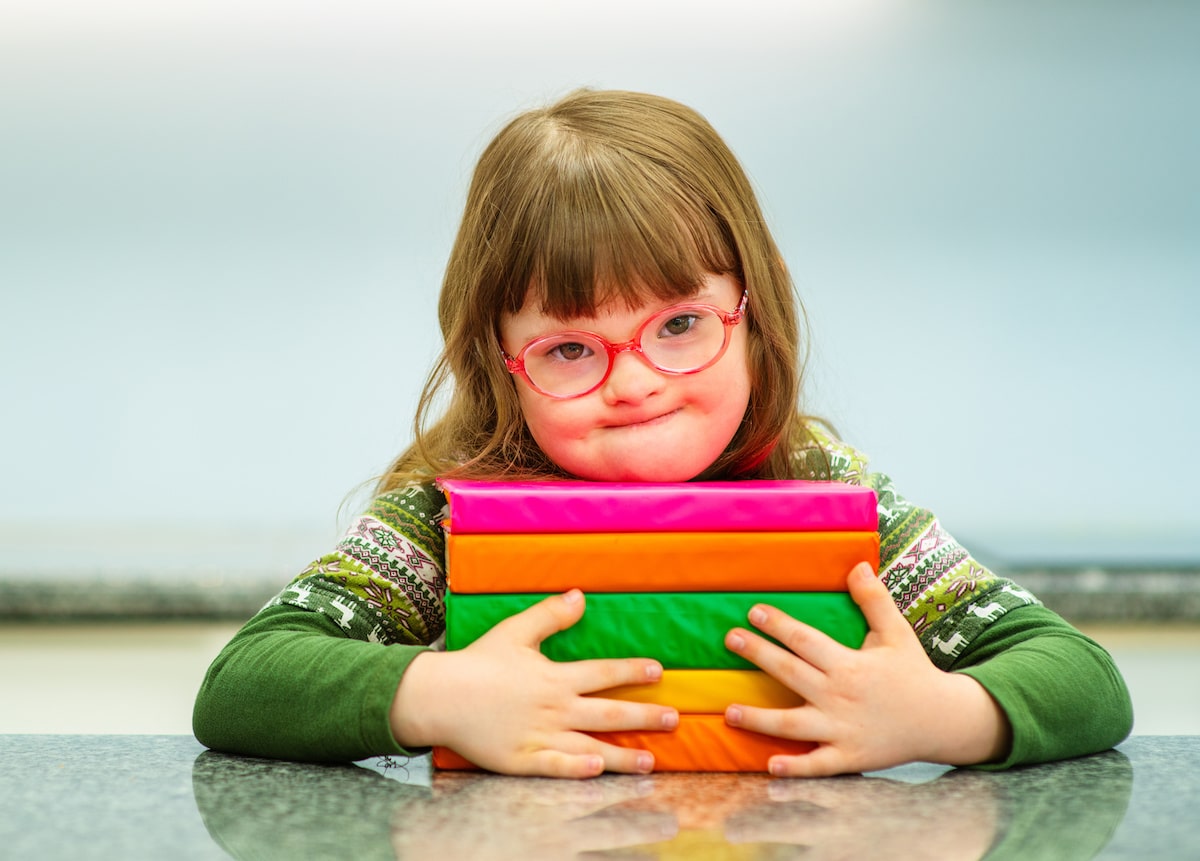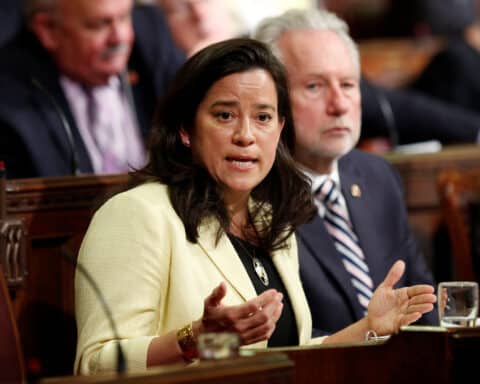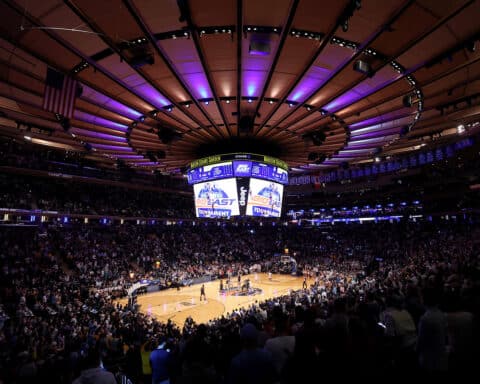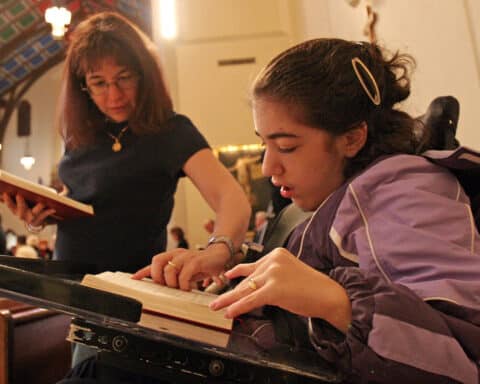When Olivia Eggleston arrived for her first day at St. John Paul the Great Catholic High School, she spotted a group of cheerleaders out front. They were there for her.
“That was something,” her father, Mark Eggleston, said as he smiled while remembering the school in Potomac Shores, Virginia. “They cheered for her and did all sorts of things to welcome her in.”
Her journey to the school was a long one: Olivia came to the Eggleston family as an undernourished newborn with Down syndrome from Guatemala. As she grew up, she went to various schools and ended up in Virginia after attending one school in Texas where, her parents found out at the end of the year, she had not spoken a word.
That changed at Saint John Paul the Great, said Eggleston, a perinatologist in Stafford, Virginia. It demonstrated how a Catholic school can open its doors to students with disabilities and different learning abilities, both as students and as human persons beloved by God. Teachers tailored lessons to her, peer mentors supported her, every boy danced with her at junior prom after she was hesitant to attend alone, a teacher asked her to be a bridesmaid, and the chaplain met with her every week for two years as she prepared for first holy Communion.
The cheering never stopped. She graduated earlier this year.
Today, estimates indicate that only a low percentage of U.S. Catholic schools include students with disabilities and learning differences. Educational leaders and experts are working to change that. With creativity and dedication, schools can overcome hurdles, from funding and staff to the fear of the unknown, experts say. They are not alone: A wealth of groups and nonprofits want to help schools open their doors to children of all ability levels.
And they should, leaders say. Welcoming these students is not only a pro-life issue but also a Catholic one.
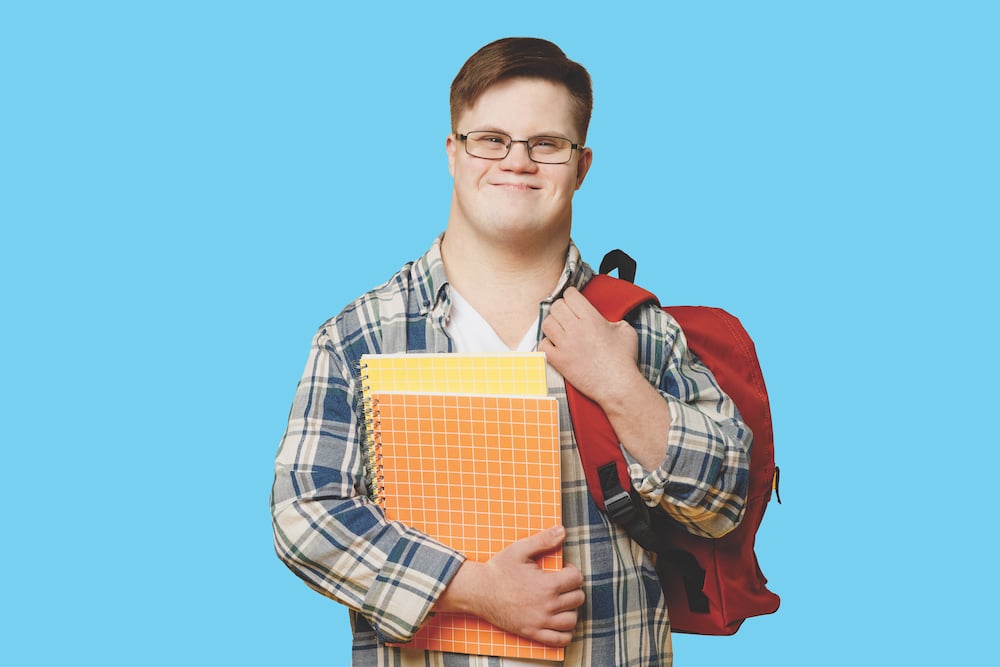
A snapshot of Catholic schools today
According to a report by the National Catholic Educational Association (NCEA), the largest, private professional education association in the world, close to 1.7 million students attended nearly 6,000 U.S. Catholic schools for the academic year 2022-23.
Only a low percentage of those schools include students with disabilities or learning differences, according to available estimates. The National Catholic Board on Full Inclusion, a nonprofit that supports inclusive education, finds that about 2% of Catholic schools include students with intellectual disabilities, while the NCEA estimates that 6.9% of Catholic schools have students with a diagnosed disability or learning difference.
“We think that that’s an underreport, by the way, because several dioceses with large numbers of participating students have not supplied data to us,” NCEA President and CEO Lincoln Snyder said. “We also know that there’s a lot of children with learning differences that may not be diagnosed or may not be reported.”
Looking at the data, Colleen McCoy-Cejka, co-founder of Inclusion Solutions, which equips schools to educate all learners, also emphasized that around 20% of the population is neurodivergent, which simply means that differences in their brains affects how their brains function.
“That means every classroom everywhere is neurodiverse,” she said. “What we really want to know is: How many Catholic schools are intentionally addressing the learning differences that are present in their schools with excellence?”
“Every classroom everywhere is neurodiverse. What we really want to know is: How many Catholic schools are intentionally addressing the learning differences that are present in their schools with excellence?”
— Colleen McCoy-Cejka
Multiple experts expressed concern about the lack of good data and highlighted the challenges of collecting accurate data, beginning with schools defining “disability” differently.
“Everybody has a different definition when they say, ‘We do accept students with disabilities'” said Mary Brogan, the vice president of the Catholic Coalition for Special Education (CCSE), which supports special education programs in Washington, D.C., and Maryland. “Even when you have the numbers, you don’t know if the schools are talking about the same thing.”
The estimates, as they stand, appear in stark contrast with public school numbers. According to the U.S. Department of Education’s National Center for Education Statistics, 15% of all public school students received special education and/or related services for the academic year 2021-22 under the Individuals with Disabilities Education Act, which requires a free and appropriate public school education for eligible students with disabilities.

A priority for U.S. Catholic bishops
Catholic schools began with the intent to provide both an academic education and spiritual development for all students through a Catholic worldview, McCoy-Cejka said, referring to the U.S. Catholic bishops’ 1978 pastoral statement on persons with disabilities.
She, along with Mary Pat Donoghue, the executive director of the Secretariat of Catholic Education for the U.S. Conference of Catholic Bishops, noted that the bishops recently approved the drafting of a new statement addressing persons with disabilities in the life of the Church.
“My office will be collaborating on that new pastoral document and we will be working toward guidance to schools on just this issue,” Donoghue said of schools not fully equipped for students with special learning needs.
“We see this really as a pro-life imperative, particularly in the post-Dobbs Church,” she said, referring to the Supreme Court ruling that overturned Roe v. Wade and freed states to decide abortion policy.
She called the ruling a charge to assist families.
“In many cases, children who are identified in utero as having some sort of disability are often aborted,” she said, “and if they’re brought to life, we really want to receive them and to care for them in our schools.”
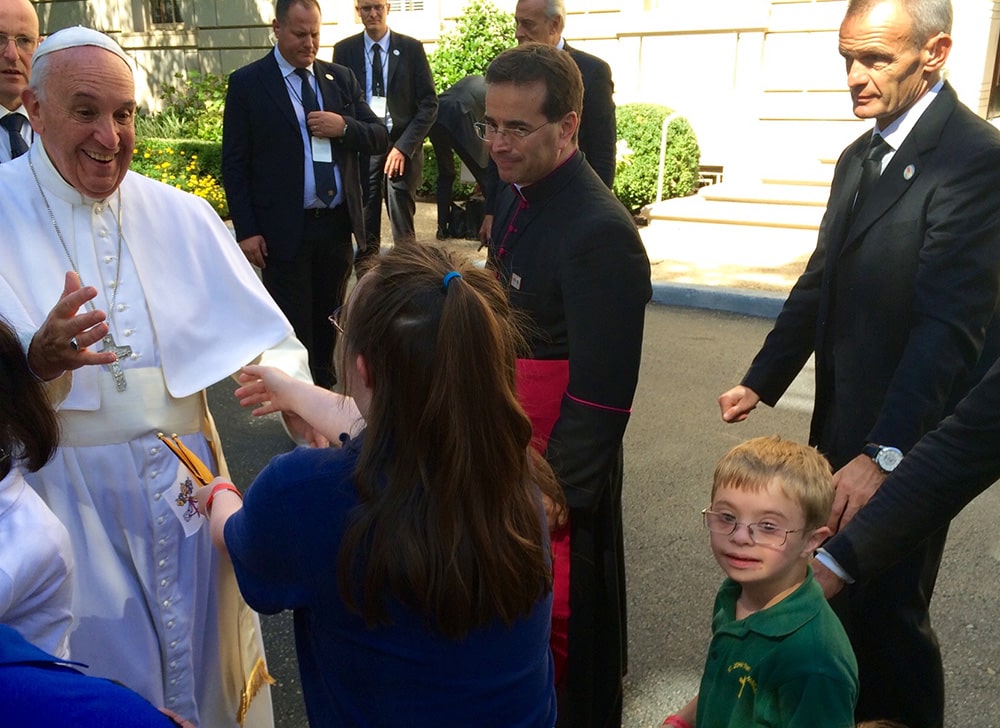
A pro-life imperative
Nearly all of the experts who spoke with Our Sunday Visitor identified the effort to include students with disabilities and learning differences in Catholic schools as a pro-life issue.
“It’s a pro-life issue because we are affirming the dignity of each individual and honoring the life that God gave them by welcoming them into our schools and meeting them where they are,” said Mary Desmarais, the founder of Catholic Inclusion LLC, which helps schools through coaching, consulting and professional development opportunities to support all learners.
“By providing inclusive education,” she added, “we are sending a message that no life is more important than another and a student shouldn’t be excluded just because of the way they learn.”
“They feel like when the Catholic school says ‘no’ to them, then their Church is saying ‘no’ to them.”
— Mary Brogan
Multiple experts noted that when schools do not accept certain learners, they impact not only those children but also their families. CCSE’s Brogan, who fields calls from parents who want their children included, acknowledged the pain some parents feel.
“They feel like when the Catholic school says ‘no’ to them, then their Church is saying ‘no’ to them,” she said.
That changes when schools say “yes.” Brogan remembered when St. John the Evangelist in Silver Spring, Maryland, began preparing for Theresa, her daughter with Down syndrome, when she was born.
“To have all of our children attend the same Catholic school and to receive the same kind of spiritual preparation was fantastic and it really spoke to not just my husband and myself but to all of Theresa’s siblings that — just as at home she was accepted and loved as one of us — in her parish and school community that was also true,” she said. “She was a child of God as they were.”
The challenges of inclusion
Educational leaders and experts identified several hurdles Catholic schools cite when they turn away students with disabilities or learning differences, from a lack of funding, resources and support to a need for special education staff, professional development training and a change in mindset.
Many of them pointed to fear as the main factor holding schools back, even when they want to say yes.
“A lot of the time, people have this fear of what it means to take a child with a disability, what they would consider a significant disability, and what that actually entails,” said Amanda Arnold, director of the JPII Special Education Program at St. Vincent de Paul Catholic School, a K-8 school in Fort Wayne, Indiana.
Others agreed.
“I think it’s always fear,” Brogan said. “I don’t think they always identify it as that, but I think in conversations sometimes, it’s just honestly fear that ‘we can’t do a good job at it.'”
Sometimes, Brogan said, the fear is not specific. School leadership might think or assume that their donors or other parents will not support an inclusive program.
Michael Boyle is the chair of the governance board of the National Catholic Partnership on Disability, which works to promote persons with disabilities in the life of the Church, and also the director of content and partnership development at Inclusion Solutions. He pointed to concerns about funding following an uncertainty about available support after changes in federal legislation.
“There was a fear that, all of the sudden, programming for students with disabilities within a Catholic school setting would ultimately drain a school of its services or finances,” he said.
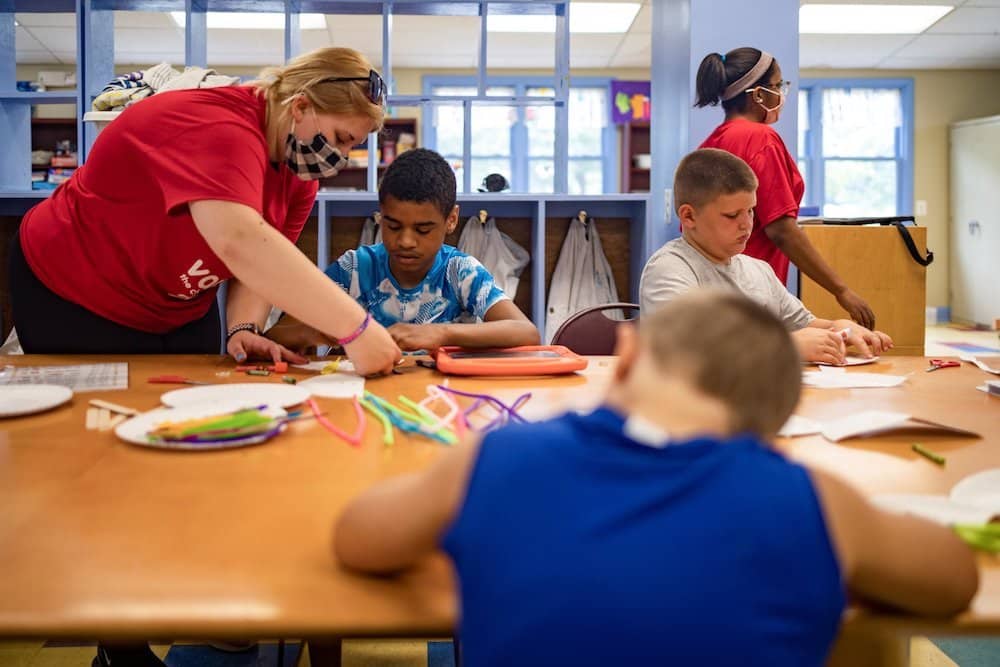
Being honest about resources
Both Brogan and Beth Foraker, the founder of the National Catholic Board on Full Inclusion, said that schools might use the excuse that they are college prep schools to turn away different learners. In response, they stressed that, today, hundreds of colleges and universities offer post-secondary programs for students with disabilities.
Other times, Catholic schools that already offer expansive programs for students with disabilities or learning differences lack the resources or capacity to admit everyone who applies.
Erin O’Malley, the principal at St. Theresa Catholic School, a K-8 school in Ashburn, Virginia, said that while her school tries to meet any challenge, sometimes they cannot accept everyone who asks. With a total enrollment of 438 students, her school serves approximately 59 students with special needs.
“There was a fear that, all of the sudden, programming for students with disabilities within a Catholic school setting would ultimately drain a school of its services or finances.”
— Michael Boyle
“That is tough, because we are called to serve, but sometimes saying we cannot support someone is serving them by being honest with what we can and cannot do,” she said. “We do not have unlimited resources, and for certain disabilities, especially those that manifest in difficult behaviors, we work with families to determine an educational setting that is better equipped for their child.”
Arnold also shared that her school does not have the space or staff to accommodate everyone. Of the 700-750 students who attend St. Vincent’s, 50-60 children have special educational needs.
“We’re too big, meaning our program is so large that we can’t take anymore kids,” she said while describing the heartbreak of turning families away.
Arnold listed other complications that inclusive programs face, from a breakdown in knowledge to the lack of a support structure. Instead, she said, Catholic schools that admit different learners often operate as “lone islands” within their cities or dioceses.
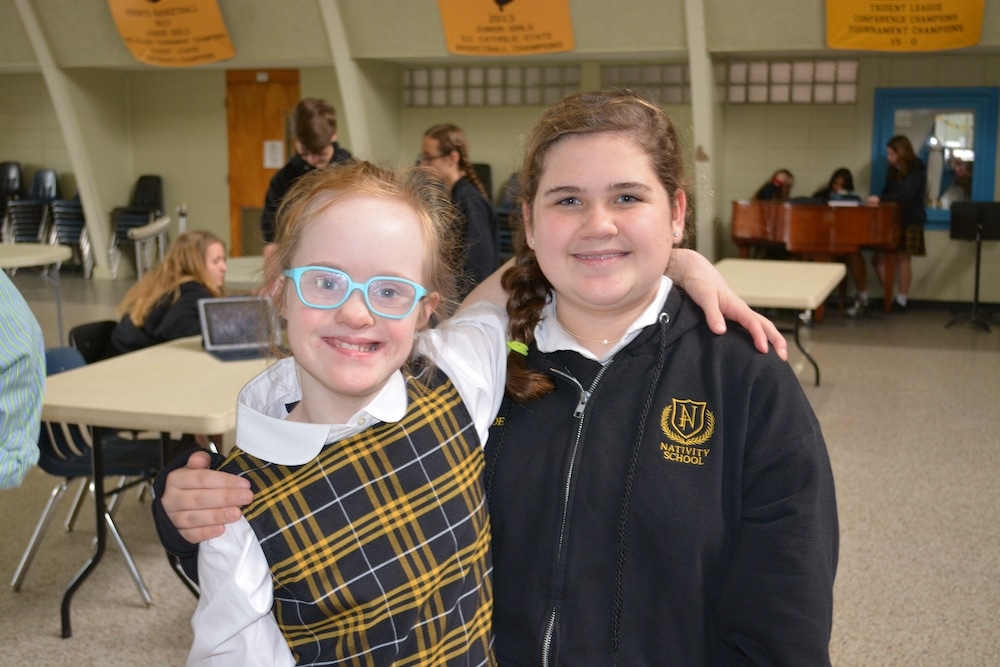
Seeking solutions
Educational leaders and experts stressed that, with creativity and dedication, schools can overcome hurdles and include students with disabilities and learning differences.
They should begin by addressing their fears head on, Brogan said.
“I think it’s important, before you begin, to kind of get all those fears out on the table and talk about them,” she said. “Then look at other schools that have done this.”
Experts stressed that schools can accept these students even with limited funding.
“That is tough, because we are called to serve, but sometimes saying we cannot support someone is serving them by being honest with what we can and cannot do.”
— Erin O’Malley
Before coming to the USCCB, Donoghue served as principal of St. Jerome Academy in Hyattsville, Maryland. The school almost closed, but that changed after it adopted a curriculum — including special education resources — based in the Church’s tradition.
“We had no money when we started,” she said. “So I was able to see that, first of all, it’s making it a priority in the same way that you say to yourself, ‘We have to have a P.E. teacher.'”
“The second thing is, you work — in the beginning, at least — with what you have,” she added.
In Indiana, Arnold said St. Vincent’s program, with four special education teachers and four paraprofessionals, uses APC funding — funds that are generated for the state to use to educate a child with a disability — to reimburse the majority of their salaries.
She noted a breakdown or misunderstanding that happens, she said, with Catholic schools getting or advocating for funds that are available to them.
Schools should also invest in staff, as well as seek professional development training for school leaders and teachers, experts say. A few highlighted the Program for Inclusive Education at the University of Notre Dame as one option.
Along the way, schools are not alone, experts say. The groups that Our Sunday Visitor spoke with offer resources, support and even funding.
At the FIRE Foundation, Executive Director Lynn Hire shared what her group does. The nonprofit based in Kansas City, Missouri, works toward creating and expanding inclusive Catholic education by offering everything from grants for schools to scholarships for teachers and students. The group has eight affiliates nationwide, with plans to grow.
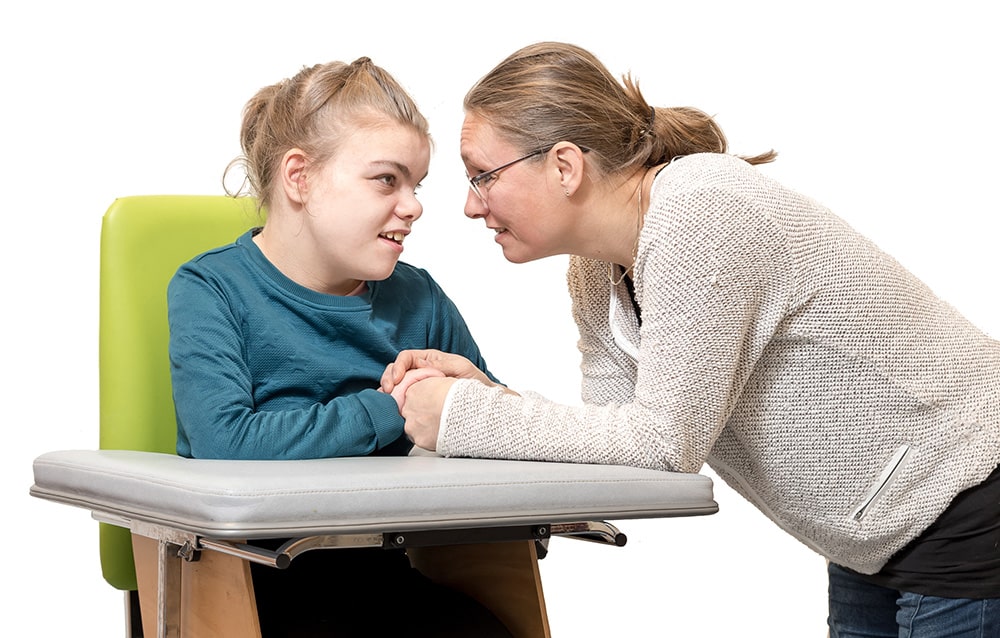
Broader support
Experts and educators also pointed to the importance of support in other areas, from Church and school leadership to parents.
“Principals, pastors, superintendents, assistant superintendents and bishops must see the value in achieving fullness of mission through Catholic education and building up our Church through Catholic education, and they must articulate it and set expectations,” McCoy-Cejka said.
Many experts agreed that schools should turn to other schools with successful programs for guidance. Several pointed to the Diocese of Arlington, Virginia, which includes St. John Paul the Great and St. Theresa, as a model. According to the Office of Catholic Schools for the diocese, 18 schools there, including all four high schools, serve several dozen students with intellectual disabilities.
“Inclusion works. Having a faith-based education works. It works because when they come to our school, they know they’re enough. They know they’re loved.”
— Emilia Foster
At St. Vincent’s, Arnold said, her program plans to pair with special education programs at other schools in an effort to build a support network where they can turn to one another for guidance.
Another benefit of building bridges, she says, is that, when one program is full, a school can recommend another school to parents.
She also envisioned a system where a point person looked at students with disabilities and learning differences, especially students with unique needs, and helped match them with a local school with the space and resources for them and their specific needs.
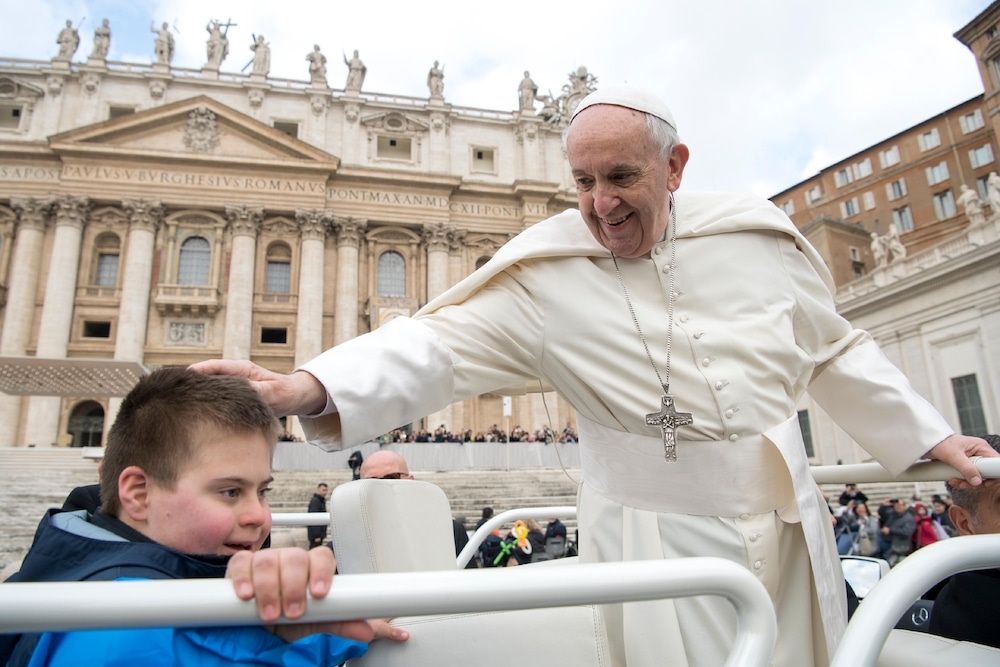
A call to help
Everyday Catholics can make a difference, according to the experts Our Sunday Visitor spoke with, from raising awareness and engaging in advocacy to donating and praying.
“Pray for us, and pray that families find their way to us!” O’Malley said.
At Catholic Inclusion, Desmarais encouraged everyone to advocate for these children.
“Ask your local Catholic school what they are doing to include students with disabilities,” she said. “Students with disabilities are part of our parishes and communities, so it shouldn’t be up to only the parents of students with disabilities to advocate and ask for inclusive education, particularly because all students benefit from inclusive education.”
“Ask your local Catholic school what they are doing to include students with disabilities. Students with disabilities are part of our parishes and communities, so it shouldn’t be up to only the parents of students with disabilities to advocate and ask for inclusive education, particularly because all students benefit from inclusive education.”
— Mary Desmarais
Arnold also pointed to the importance of raising awareness in local communities. For her part, she promises to continue building a better future for her students.
“I see some of these kids who have to work super, super hard to do something that most kids do super fast,” she said. “Maybe it’s writing their name — and I see the concentration and the work and the amount of time and effort they fight through to do something that most people take for granted — and if they can do that every day of their life, then I feel like that’s my job, in a different way, for them.”
“If they don’t give up,” she said, “I’m not giving up.”
| A national winner |
|---|
|
Every year, two students with special needs nationwide are awarded the Nicholas Maxim Award in the Zaner-Bloser National Handwriting Contest. Since the competition began in 1991, about 2.5 million students have competed in the national contest. The Nicholas Maxim Awards — named for a fifth grader who in 2011 won the contest despite being born without hands and lower arms — go to one student for cursive and another for manuscript writing. While many schools no longer teach handwriting, about half of the Zaner-Bloser winners attend a Catholic elementary school, reported Today’s Catholic, the newspaper of the Diocese of Fort Wayne-South Bend, Indiana. One such student is the 2023 Nicholas Maxim Award winner, Andrew Clevenger, who will be a third grader at Corpus Christi School in South Bend, Indiana, this fall. When he was 4 years old, Clevenger was diagnosed as being on the Autism spectrum. However, his parents, medical team and teachers at Corpus Christi worked diligently to develop the right treatment that would allow him to excel in his education and life in general. “Andrew takes great pride in making his work turn out exactly the way he wants it,” Michele Tubbs, the resource teacher at Corpus Christi, told Today’s Catholic. “The smile on his face when he does a great job is priceless.” Being one of two national winners of such a prestigious award suggests the importance of Catholic schools that will walk alongside students with special needs. |
A difference worth making
As a teacher who works with students with intellectual disabilities at St. John Paul the Great, Emilia Foster instructs students like Olivia. She, like Arnold, embraces her job as a calling.
“Inclusion works. Having a faith-based education works,” Foster said. “It works because when they come to our school, they know they’re enough. They know they’re loved,” she said.
With Foster’s help, Olivia — a student who was once silent — now brings joy to strangers, her father said.
He recalled when, one day, she accompanied him to the local grocery store. As he drove into the parking lot, she begged him to stop.
“Stop right now, Daddy!” he said she insisted.
She opened the door and flew out. Bewildered, he saw her running toward an elderly man in a wheelchair. He parked the car as quickly as he could and jumped out to see what she was doing.
“She goes, ‘Hi, my name is Olivia, and I’m from Guatemala-mala-mala-mala!'” he remembered her words gushing out. “And that’s the kind of girl she is.”

